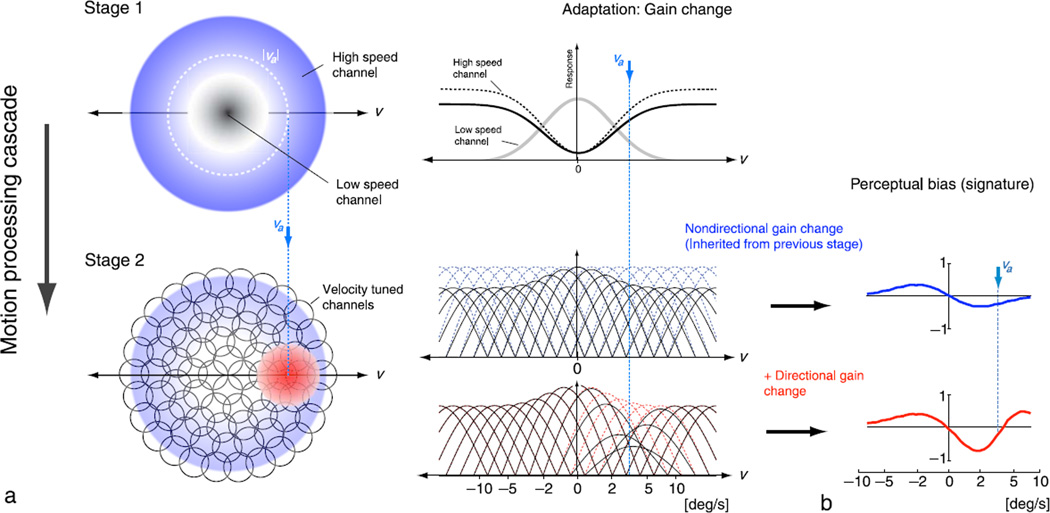Figure 8.
Simulation of adaptation effects arising from gain reduction at two stages of a velocity processing cascade. (a) The first stage consists of two (classes of) nondirectional channels, tuned for low and high speeds. In the illustrated example, adaptation changes the relative response gain of the high speed channel (blue region). Channels of the first stage then provide input to a second processing stage containing more narrowly tuned direction-selective velocity channels, which inherit the adaptation induced gain changes from the first stage but also undergo additional (directional) gain changes themselves (red region). The percept is decoded from the second stage. The middle column shows one-dimensional slices along the horizontal velocity axis. (b) Simulation results for the case of inherited gain reduction from the first stage only (blue), as well as the full model with gain changes in both stages (red). The population consisted of 21 equally spaced channels with rectified cosine tuning curves and equal tuning width when plotted in the chosen perceptual space. The mean response of each channel is determined by its tuning curve (shown in (a)) and response variability was assumed to follow a Poisson process. The perceptual estimate was assumed to be the population average, computed as v̂(vs) = Σiv0irivs/Σirivs, where is the preferred velocity of channel i and ri is its response to a stimulus with velocity vs. The model qualitatively predicts the subjects’ perceptual bias as shown in Figure 3. Results represent the average bias measured over 30,000 samples of the population response for each test velocity (see Supplementary material for simulation results for estimation variability). The gain reduction profile was Gaussian, with width twice and amplitude half as large for the nondirectional than for the directional mechanism, roughly matched to the fitted parameters from our subjects’ data (see Figure 4b).

